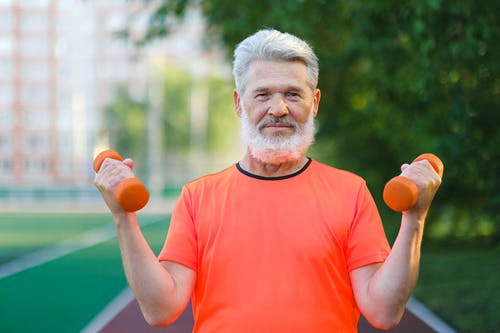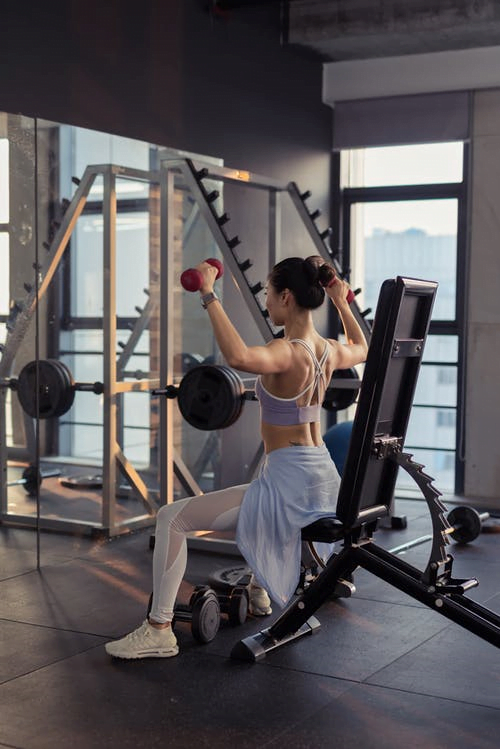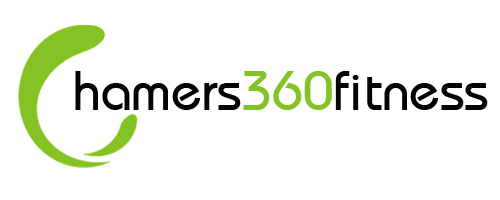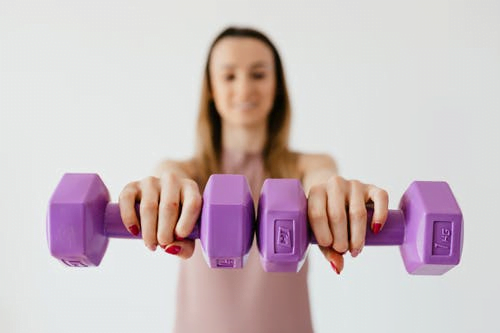Gone are the days when the weights area in the gym was reserved for experienced weight-lifters or people looking to ‘bulk up’ and gain masses of muscle and size. The past few years have seen a huge growth in interest in resistance and strength training for a wide variety of people. It really is true that whatever your ‘why’ for training, there will be benefits to be had in incorporating some resistance work. Read on to find out some common effects of resistance training (most of which are good!) 🙂
1. Supports healthy ageing and bone health – In the long-term, weight-bearing exercise including walking, climbing stairs and resistance training will help to reduce the loss of bone mass associated with ageing and can increase bone density. This can help to keep bones strong and healthy and reduce the risk of osteoporosis. Resistance training can also increase the strength of connective tissues such as ligaments and tendons thus reducing chance of injuries and improving joint stability. It will also help to prevent the natural loss of lean muscle that comes with ageing (sarcopenia).

2. Improves functional strength making everyday activities easier – Increased strength, power or muscular endurance (depending on the type of training) not only means that we can lift and move heavier objects than if we didn’t train our muscles but also that many everyday activities such as carrying shopping, climbing stairs, moving furniture or lifting/wrestling car seats and children are easier as they require a smaller percentage of our maximal effort.
3. Improves body composition and supports a ‘toned’ appearance – Resistance training effects a potential increase in fat-free mass/ muscle mass and decrease in fat mass. This reduces your relative body fat percentage. This can help muscles to become more visible as any body fat covering them is decreased and resistance training can also help to achieve the ‘toned’ look that many people desire from training. In building lean muscle through training we can also boost our metabolism so that we burn more calories at rest and inbetween training sessions. Not to mention the benefits that reduced body fat can have on our health.
Yes, it’s true that resistance training (combined with dietary guidance) can help people to both ‘slim down’ and ‘bulk up’ and if you’re confused as to how to tailor it to your goals make sure to speak to a personal trainer or other fitness professional who can match your training to your ‘why’.

4. Improves posture/ reduces everyday aches and pains –This can be achieved through training specific muscles but also by balancing strength between opposing muscles that may be imbalanced. For example if you spend a lot of your time hunched over a computer screen or doing a repetitive, manual job for long periods, chances are certain muscles will become stronger whilst others become weaker as they’re neglected in everyday movement patterns and activities. A planned resistance training programme can help to balance out these areas and specific muscles thus improving posture and potentially reducing specific aches and pains that we may get as a result of our lifestyle.
5. Gives you Delayed Onset Muscular Soreness (DOMS) – This is a short-term effect of training and refers to the muscular pain, soreness and/or stiffness that we may experience typically 12-72 hours (or 1-3 days) after a training session. This is particularly common when someone begins a new exercise programme, increases exercise intensity or returns to training after a prolonged break. DOMS are thought to be triggered by micro-tears inflicted on muscles during training which causes an inflammatory response in the body. Whilst they don’t sound (or feel) particularly appealing, as we become more conditioned they do generally reduce and there is a lot you can do to help to ease them. See my previous blog for some ideas for activities to support recovery between training sessions including foam rolling, good nutrition and massage. Additionally, they serve as a great reminder for you in the days following a session of how hard you worked and how proud you should be of yourself. I’m all about accentuating the positive so wear that post-legs day waddle like a badge of honour! ?
As always, I hope you’ve found this blog useful particularly if you’re thinking of incorporating resistance training into your exercise programme or were unsure of if it’s right for you. If you need any support or further advice please contact Mike at Hamers360fitness or myself (Bev) over on Instagram.
Bev Meakin – Personal Trainer/Exercise Referral Officer and Complementary Therapist. Instagram : @bevs_life

